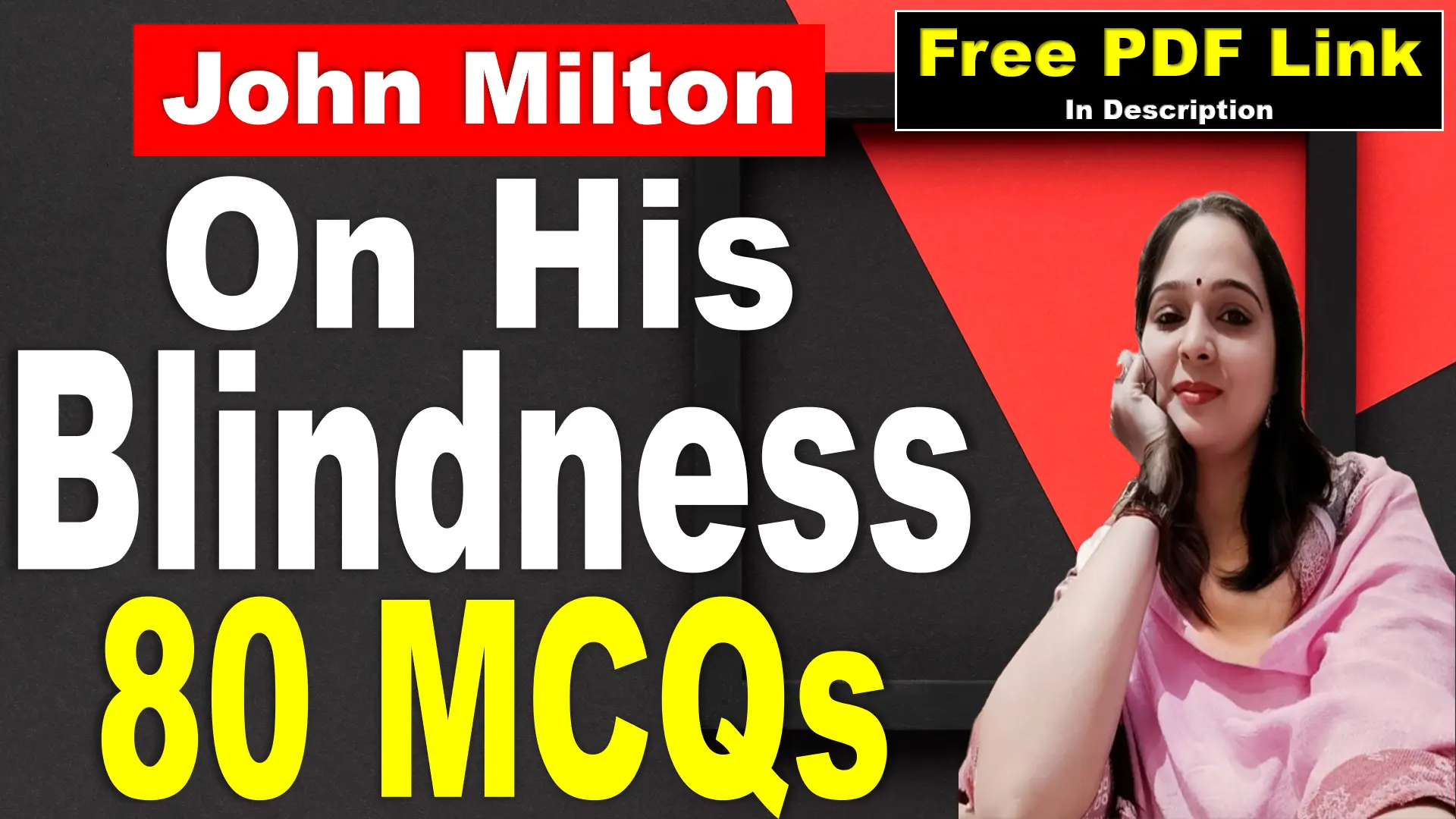
The World Is Too Much With Us Questions Answers
Very Short Answer Questions
Who is the author of The World Is Too Much With Us?
William Wordsworth.
What is the primary theme of the poem?
The disconnection between humanity and nature due to materialism.
What poetic form is used in this poem?
It is a Petrarchan (Italian) sonnet.
What is the rhyme scheme of the poem?
ABBA ABBA CDCDCD.
Who is the speaker of the poem?
An anguished observer expressing frustration over society’s values.
What natural elements does the speaker lament over?
The sea and the winds.
What does the speaker mean by “sordid boon”?
Material wealth that is morally corrupt.
Which mythological figure is mentioned as rising from the sea?
Proteus.
Who is Triton in the poem?
An ancient sea god symbolizing connection to the ocean.
What emotion does the speaker primarily express?
A sense of longing and forlornness.
What does the speaker prefer over modern materialism?
A return to pagan beliefs.
What does “out of tune” signify in the poem?
A loss of harmony with nature.
What type of imagery is prevalent in the poem?
Vivid imagery of nature and mythological references.
What is the tone of the poem?
Mournful and contemplative.
How does the speaker feel about modern society?
Disappointed and disconnected.
What does the speaker wish to regain?
A spiritual connection with nature.
What does the phrase “baring her bosom” refer to?
The sea revealing itself to the moon.
How does Wordsworth view nature in the poem?
As a source of inspiration and spiritual fulfillment.
What literary devices are prominent in the poem?
Imagery, Personification, allusion, and metaphor.
What message does Wordsworth convey about materialism?
It leads to alienation from the beauty and significance of nature.
Short Answer Questions
What is the significance of the title “The World Is Too Much With Us”?
The title suggests that humanity is overwhelmed by worldly concerns, such as materialism and industrialization. Wordsworth implies that these preoccupations have caused us to lose touch with the natural world and our spiritual well-being. The phrase “too much with us” indicates an excessive focus on material pursuits at the expense of nature.
How does Wordsworth use imagery to convey his message in the poem?
Wordsworth employs vivid imagery to highlight the beauty and power of nature, such as “This Sea that bares her bosom to the moon” and “The winds that will be howling at all hours.” These images evoke a sense of wonder and emphasize what humanity is missing due to its disconnection from nature. The imagery serves to contrast the natural world’s splendor with the mundane concerns of modern life.
What role does personification play in the poem?
Personification is used to give human qualities to natural elements, making them more relatable and emphasizing their significance. For example, the sea is described as baring “her bosom to the moon,” suggesting a nurturing relationship. This device helps to convey the idea that nature is alive and capable of emotional interaction, which humanity has become blind to.
Why does Wordsworth express a desire to be a Pagan in the poem?
Wordsworth expresses a desire to be a Pagan because he believes that ancient pagan beliefs were more in tune with nature. Pagans worshipped natural elements and found divinity in the natural world, which contrasts with the materialism of Wordsworth’s time. By wishing to be a Pagan, Wordsworth highlights his longing for a deeper, more spiritual connection with nature.
How does the poem reflect Wordsworth’s views on industrialization?
The poem reflects Wordsworth’s critical view of industrialization, which he believes has led to a disconnection from nature. He laments that humanity’s focus on “getting and spending” has caused us to “lay waste our powers” and lose sight of the natural world. Wordsworth sees industrialization as a force that prioritizes material wealth over spiritual and emotional fulfillment.
What is the significance of the mythological references in the poem?
The mythological references to Proteus and Triton symbolize a time when humans were more attuned to the natural world. Proteus, a sea god, and Triton, the messenger of the sea, represent ancient beliefs that celebrated nature’s power and mystery. These references underscore Wordsworth’s longing for a return to a more harmonious relationship with nature.
How does the poem’s structure contribute to its overall meaning?
The poem’s structure as a Petrarchan sonnet, with an octave and a sestet, allows Wordsworth to present a problem and then reflect on it. The octave describes humanity’s disconnection from nature, while the sestet expresses a longing for a return to ancient beliefs. This structure helps to emphasize the contrast between the materialism of the present and the spiritual connection of the past.
What does Wordsworth mean by “we are out of tune”?
By saying “we are out of tune,” Wordsworth means that humanity is no longer in harmony with the natural world. This metaphor suggests that just as an instrument out of tune produces discordant sounds, humans disconnected from nature experience a lack of spiritual and emotional fulfillment. It highlights the need to restore this lost harmony.
What message does Wordsworth convey through the poem?
Wordsworth conveys a message of reconnecting with nature and recognizing its spiritual and emotional value. He critiques the materialism and industrialization of his time, suggesting that these forces have led to a loss of fulfillment. The poem calls for a return to a more harmonious relationship with the natural world, where beauty and spiritual nourishment are prioritized over material wealth.
Compare the organisation of this sonnet with that of the sonnet by William Shakespeare.
The sonnet by William Wordsworth is written in the Petrarchan or Italian sonnet form, which is divided into two parts: an octave (the first eight lines) with the rhyme scheme abbaabba, and a sestet (the last six lines) with the rhyme scheme cdcdcd or cdecde. The Petrarchan sonnet typically presents a problem or question in the octave, and a resolution or answer in the sestet.
In contrast, the sonnet form used by William Shakespeare is known as the Shakespearean or English sonnet. It consists of three quatrains (four-line stanzas) with the rhyme scheme abab cdcd efef, followed by a final rhyming couplet with the rhyme scheme gg. The Shakespearean sonnet often presents a problem or theme in the first two quatrains, develops it in the third quatrain, and resolves it or presents a twist in the final couplet.
In summary, while both sonnets have 14 lines and are written in iambic pentameter, they differ in their structure and rhyme scheme.





